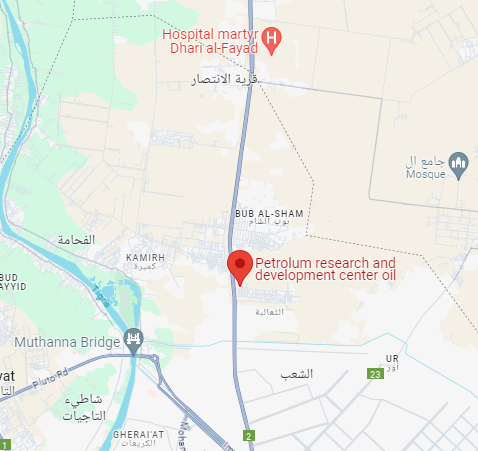Simulation Study of Methyl Salicylate Production via Reactive Distillation Columns
DOI:
https://doi.org/10.52716/jprs.v15i2.976Keywords:
gPROMs, Methyl salicylate, Optimization, Reactive distillation, Simulation.Abstract
In this research, reactive distillation column simulation of methyl salicylate (MeSC) synthesis is well explored and discussed. Methyl salicylate is one of the common esters used in industries such as the manufacture of pharmaceuticals, fragrances and flavors and is produced through esterification of salicylic acid (ScA) and methanol (MeOH). Reactive distillation, which combines the reaction kinetics and separation operations together in the same vessel, can be regarded as a very effective approach. By Applying different parameters using the process simulation software, the best operating conditions for the formation of methyl salicylate were determined including the temperature and the types of columns. Here research is carried out with an aim of assessing the performances of batch (CBD) and semi batch (SBD) processes of reactive distillation and establish the conversion rates as well as the conversion efficiencies. The accomplishment of the production process simulation is facilitated by gPROMS Module Builder that can model more than simple reactions to produce high purity methyl salicylate through distillation. The paper also compares the efficiency of the SBD composition with the CBD methods, and the statistics differ significantly; the SBD composition has a 85% conversion rate and has the highest purity of 99%.
Insights from simulation provide valuable guidance for optimizing process parameters and selecting the most appropriate distillation mode for industrial-scale production. This research contributes to ongoing efforts to intensify the process and emphasizes the potential of reactive distillation as aviable method for methyl salicylate synthesis.
References
D. Y. Aqar, N. Rahmanian, and I. M. Mujtaba, “A novel split-reflux policy in batch reactive distillation for the optimum synthesis of a number of methyl esters”, Separation Purification Technology, vol. 221, pp. 363-377, 2019. https://doi.org/10.1016/j.seppur.2019.03.071.
S. R. Kirumakki, N. Nagaraju, K. Murthy, and S. Narayanan, “Esterification of salicylic acid over zeolites using dimethyl carbonate”, Applied Catalysis A: General, vol. 226, no. 1-2, pp. 175-182, 2002. https://doi.org/10.1016/S0926-860X(01)00900-0
W. Backhouse, “The concept of reactive distillation", Chemical Engineering Journal, vol. 22, pp. 466-472, 1932.
J. G. Segovia-Hernández, S. Hernandez, and A. B. Petriciolet, “Reactive Distillation: A Review of Optimal Design Using Deterministic and Stochastic Techniques”, Chemical Engineering and Processing: Process Intensification, vol. 97, pp. 134-143, 2015. https://doi.org/10.1016/j.cep.2015.09.004
H. Lee, S. Kim, and Y. Park, “Optimization of methyl salicylate synthesis by reactive distillation: a simulation study”, Journal of Process Engineering, vol. 45, pp. 789-798, 2020.
A. Tsatse, S. R. G. Oudenhoven, A. J. B. T. Kate, and E. Sorensen, “Optimal design and operation of reactive distillation systems based on a superstructure methodology”, Chemical Engineering Research and Design, vol. 170, pp. 107-133. 2021. https://doi.org/10.1016/j.cherd.2021.03.017
H. Shi, W. Zhu, H. Li, H. Liu, M. Zhang, Y. Yan, and Z. Wang, “Microwave-accelerated esterification of salicylic acid using Brönsted acidic ionic liquids as catalysts”, Catalysis Communications, vol. 11, no. 7, pp. 588-591, 2010. https://doi.org/10.1016/j.catcom.2009.12.025
J. G. Segovia-Hernández, S. Hernández, and A. B. Petriciolet, “Reactive distillation: A review of optimal design using deterministic and stochastic techniques”, Chemical Engineering and Processing: Process Intensification, vol. 97, pp. 134-143. 2015. https://doi.org/10.1016/j.cep.2015.09.004
I. M. Mujtaba, “Batch distillation: Design and operation”, vol. 3, World Scientific Publishing Company, 2004.
T. Chien, D. R. Jones, and T. Danino, “Engineered bacterial production of volatile methyl salicylate”, ACS Synthetic Biology, vol. 10, no. 1, pp. 204-208, 2020. https://doi.org/10.1021/acssynbio.0c00497
D. Y. Aqar, “Modelling and Optimization of Conventional and Unconventional Batch Reactive Distillation Processes. Investigation of Different Types Batch Reactive Distillation Columns for the Production of a Number of Esters such as Methyl Lactate, Methyl Decanoate, Ethyl Benzoate, and Benzyl Acetate using gPROMS”, (Doctoral dissertation, University of Bradford), 2018.
Y. L. Kao, and J. D. Ward, “Simultaneous optimization of the design and operation of batch reactive distillation processes”, Industrial & Engineering Chemistry Research, vol. 55, no. 1, pp. 267-278, 2016. https://doi.org/10.1021/acs.iecr.5b03170
C. L. Yaws, “Handbook of chemical compound data for process safety”, Elsevier, 1997.
Y. Ren, M. R. McGillen, V. Daële, J. Casas, and A. Mellouki, “The fate of methyl salicylate in the environment and its role as signal in multitrophic interactions”, Science of The Total Environment, vol. 749, p. 141406, 2020. https://doi.org/10.1016/j.scitotenv.2020.141406
Downloads
Published
How to Cite
Issue
Section
License
Copyright (c) 2025 Mohammed Jassim, Dhia Y. Aqar, Safaa M. R. Ahmed

This work is licensed under a Creative Commons Attribution 4.0 International License.














